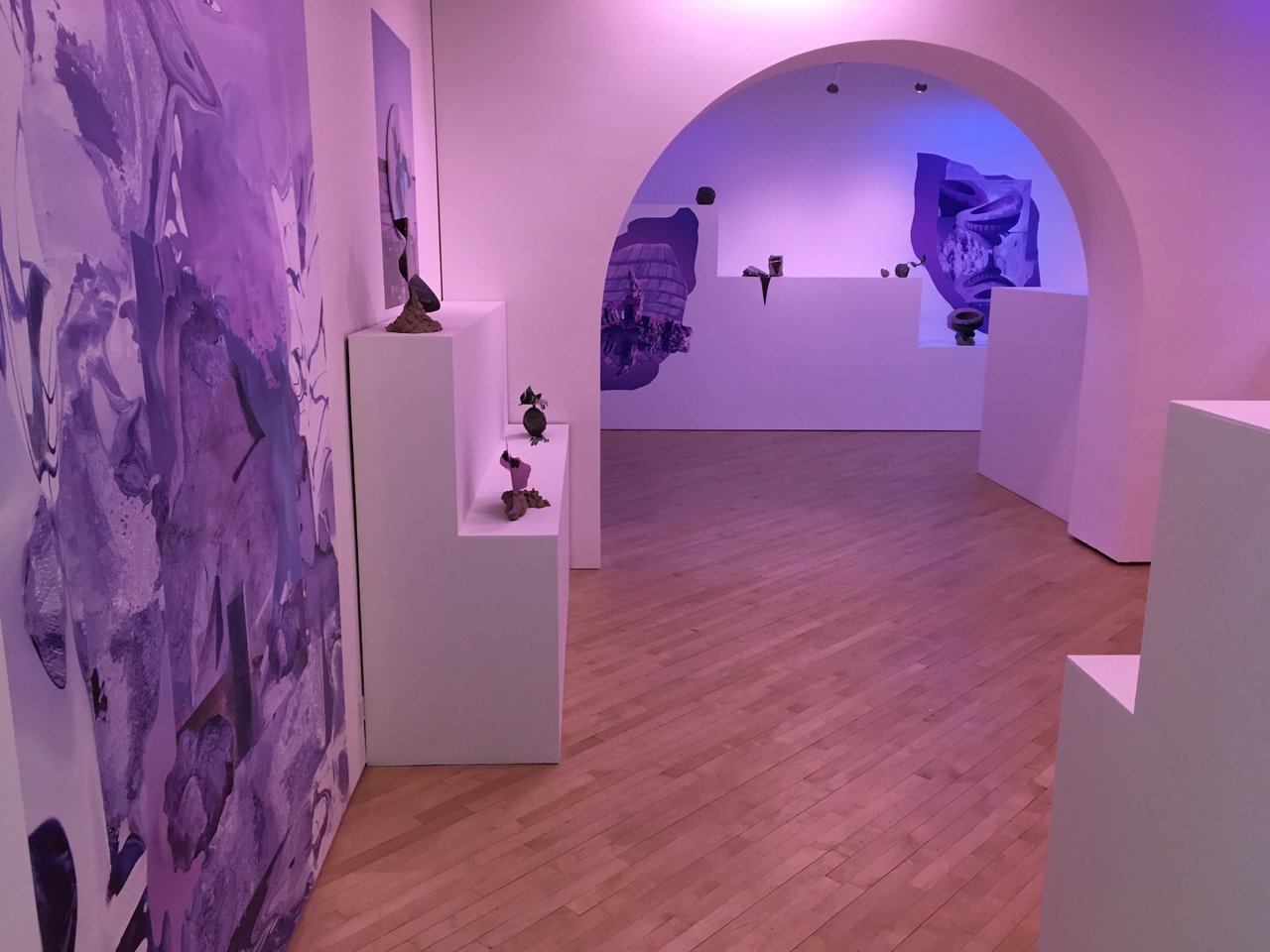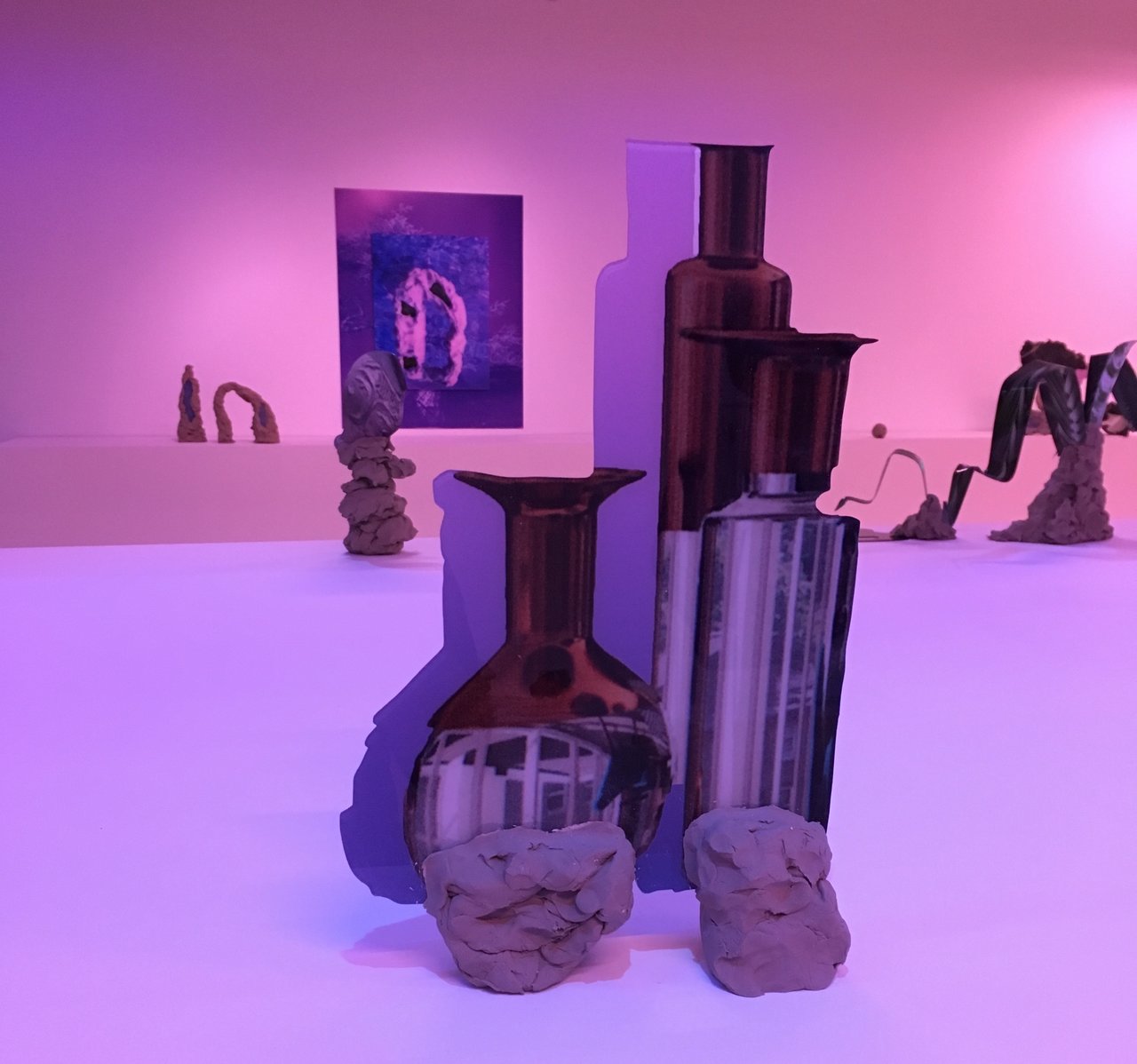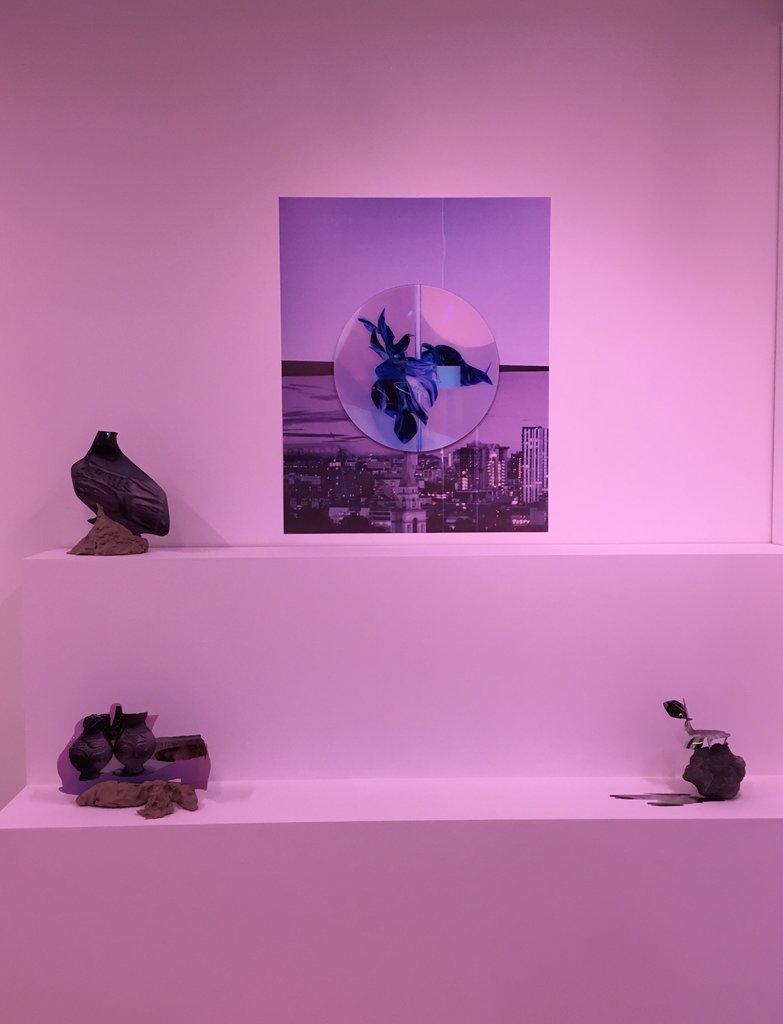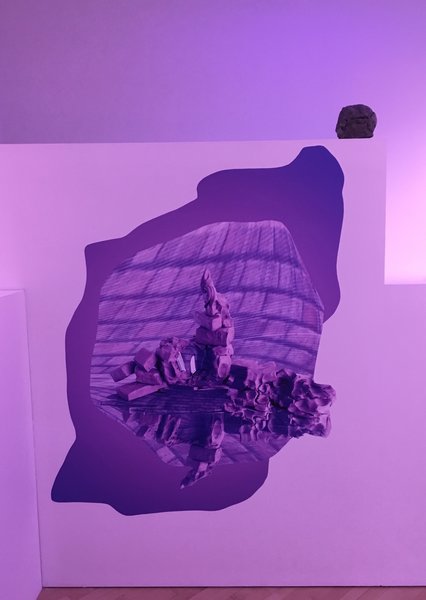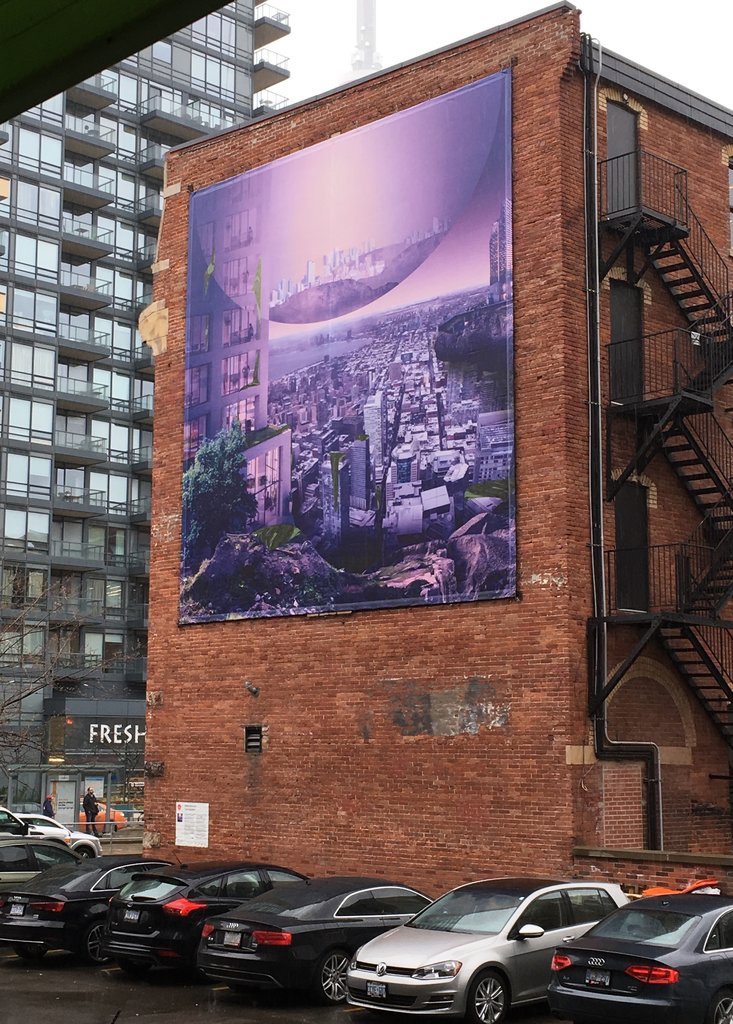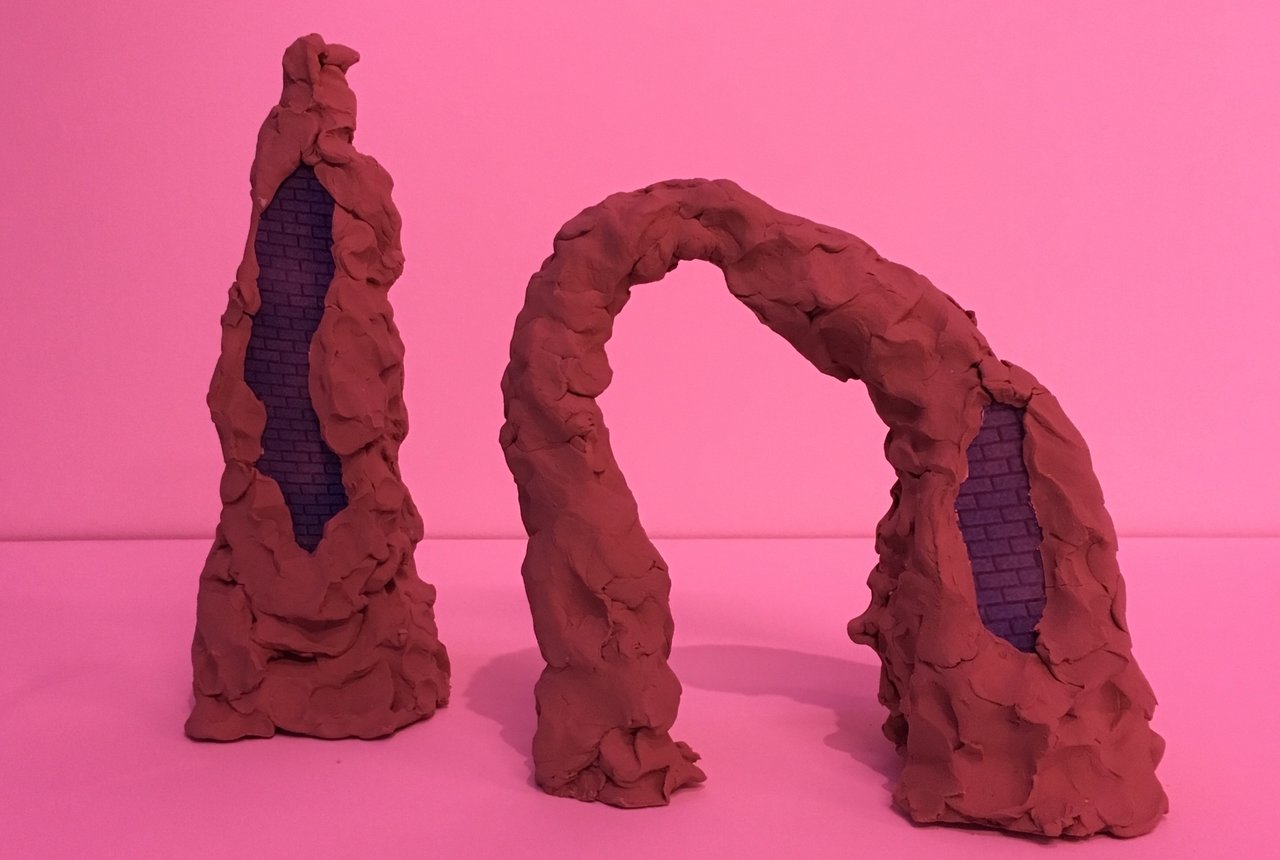Felicity Hammond, Installation view of Arcades at CONTACT Gallery
Felicity Hammond re-imagines Toronto’s built-environment of architectural forms and condo culture in the site-specific project Arcades at CONTACT Gallery. Using a combination of sculpture and photography, the work displayed investigates motifs found in the promotion of condo development and the ever-changing landscape of the city – presented in an otherworldly fusion of clay, concrete, wood and digital imagery merged into mutated vases, planters, and into amorphous masses under coloured lights.
Installation view with Felicity Hammond, Untitled, from Arcades, 2018 at CONTACT Gallery
Curator Bonnie Rubenstein describes in the exhibition’s text how “(Hammond’s) project considers the timescale at play, where capitol is held in the virtual depiction of space rather than the physical structure itself, and where property is bought and sold based solely on their digital representations.” Rubenstein continues, “Vistas of new cityscapes appear to excavate the past in order to renew the present, and our experience of architecture in the physical realm becomes shadowed by such images.” Hammond’s Arcades merge the real and virtual alluding to how one may perceive their city in terms of its history, its present state, and its future.
Installation view with Felicity Hammond, Fragment 08, from Arcades, 2018 at CONTACT Gallery
Hammond has created an ethereal environment for the gallery, photos appear morphed and liquified, many of the objects are familiar yet formless. In the gallery individual objects are presented to the viewer as imagined archaeological findings, the works are titled numerically (Fragment 01, Fragment 02, etc.) The flat glossiness of the digital representations of architectural forms (such as windows and building exteriors) are directly at odds with the hands-on physicality of the lumpy brown clay. The effect of these amorphous objects is amplified by the coloured lights used throughout the gallery: blues, pinks, and purples that immerse the viewer in a celestial environment.
Felicity Hammond, Fragment 11, from Arcades, 2018 at CONTACT Gallery
The second half of the exhibition can be found outside the gallery at 460 King St. West on the facade of the neighbouring red brick building and is titled, “Post Production” (2018). It is a large-format mural made up of photographs that Hammond has taken of Toronto’s skyline and collaged together into a purple dreamlike CGI cityscape looking neither post-apocalyptic or utopic. Like the exhibition the (un)familiar city we see depicted is flush with purple light from the planet’s atmosphere, green growths are clinging to the architecture like moss on a tree and floating above is a gigantic bubble showing a translucent cityscape inside as if it were a crystal ball.
Felicity Hammond, Post-Production, 2018
For someone that grew up in the 80’s and 90’s, the title, Arcades, quickly evokes memories of video game arcades that once flourished in some of the strip-malls in my hometown. The dim spaces lit up by the flashing video monitors of as many arcade units as could be crammed into one space. They were a place where fantasy and science fiction saturated the minds of youth. The youthful “radical” aesthetic of the arcade clashed with that of the generic decorative motifs of its harbouring strip-mall; fake plants, sand-filled ashtrays, marble tiles and all. Historically though, the arcade refers to the Arcades of Paris, the glass-covered alleyways built in the nineteenth century, that allowed Parisians to turn the alleyways of shops into fashionable hangouts and a place to escape the elements. The subject of the Arcades of Paris became a focal point for Walter Benjamin in his incomplete Arcades Project published posthumously, linking them to the city’s street-life and the habitat of the flaneur. In that writing Benjamin describes the arcades as fluid places, “like realities in the dream”, “dissolved in a constant flux”. The Arcades of Paris were a place where opposites merged, the old met the new, the outdoor the indoor.
Felicity Hammond, Untitled, from Arcades, 2018 at CONTACT Gallery.
This relationship of transformation within space and through time is visible in the way modern cities continue to develop and redevelop as industry changes. The structures that one industry used to occupy become the recycled remains on which the next is constructed; a brick façade becomes the foundation to accommodate a mirrored skyscraper. The city is in constant flux. Properties are bought and sold before they even get constructed. These are some of the conundrums Hammond brings to light in her Arcades.
Text and photo: Daniel Joyce
*Exhibition information: April 28 – June 29, 2018, CONTACT Gallery, 80 Spadina Ave Ste 205, Toronto. Gallery hours: Tue – Fri 11 am – 6 pm, Sat 12 – 5 pm.
**Part of Scotiabank Contact Photography Festival 2018

